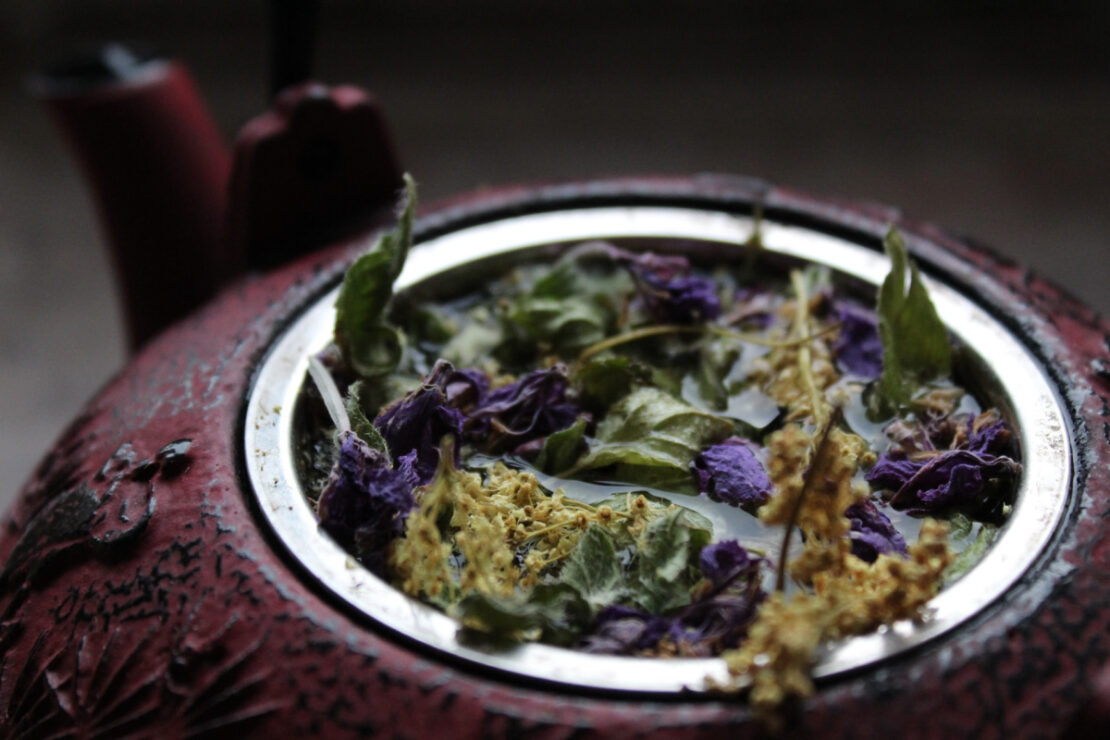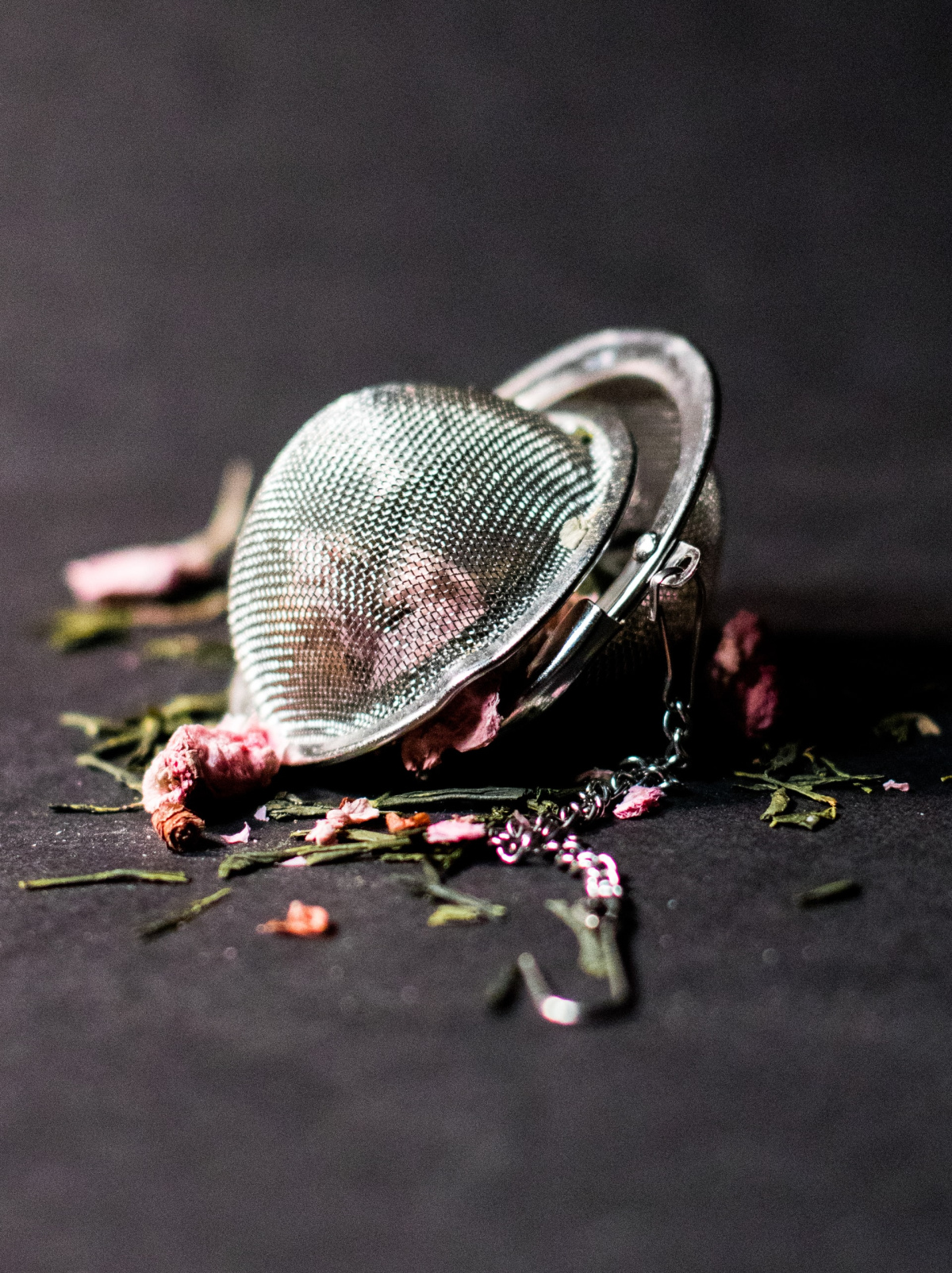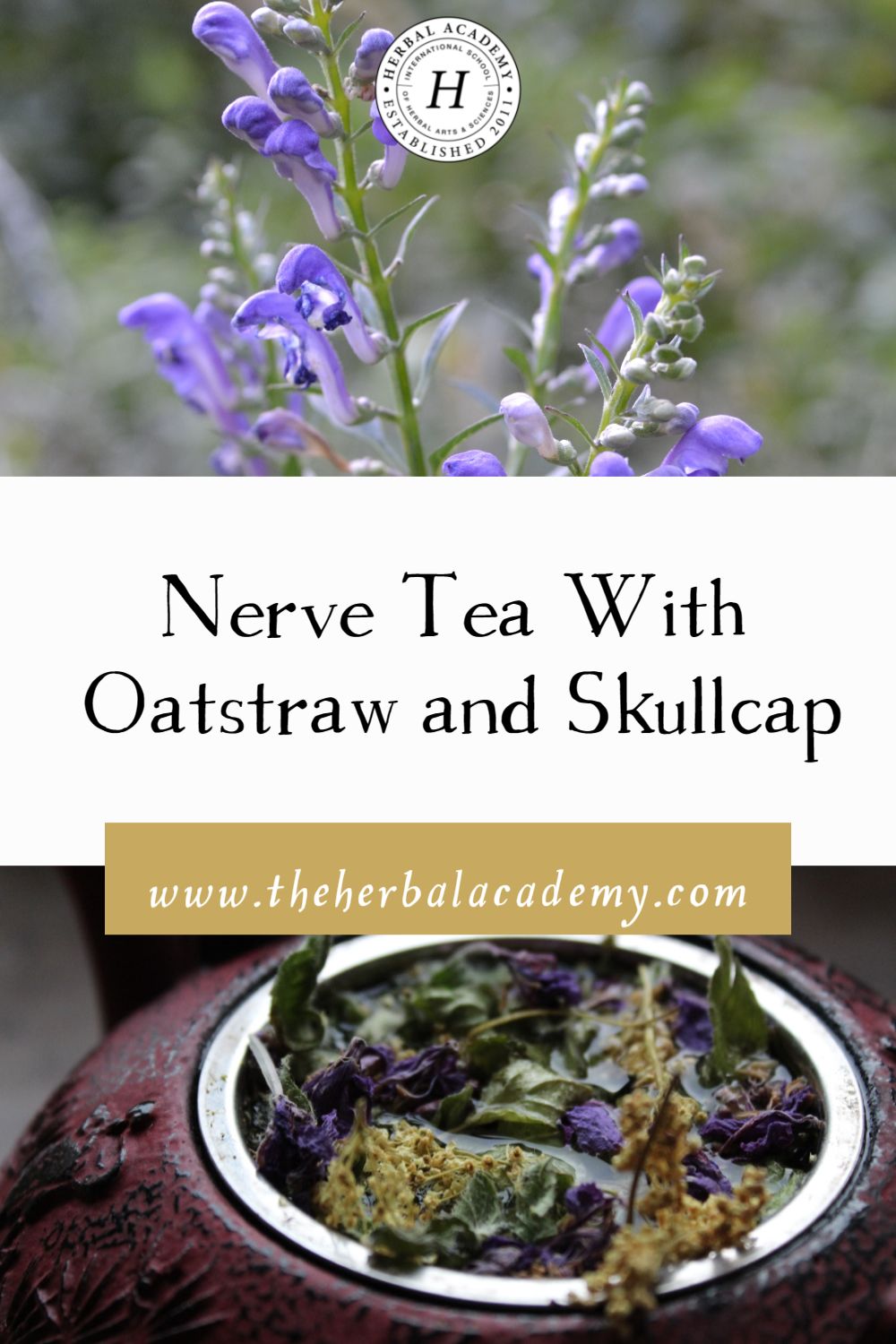
Nerve Tea With Oatstraw and Skullcap
This herbal nerve tea recipe combines skullcap (Scutellaria lateriflora), a superior relaxing nervine, oatstraw (Avena sativa), a nervous system trophorestorative, and violet (Viola odorata), an overall nerve restorative, to simultaneously soothe agitation and strengthen the overall function of the nervous system (Holmes, 1989a; Holmes, 1989b).
Tulsi (Ocimum tenuiflorum) is another go-to herb for nerve support since it functions as a mild adaptogen, helping guide the body to a state of stress resiliency instead of reactivity (Cohen, 2014). Its mixed stimulant and relaxant properties help make this tea a more balanced blend for enjoying anytime throughout the day.
Marshmallow (Althea officinalis) root lends its moistening and mucilaginous nature to balance the more dry components of the other herbs in this recipe, while providing a secondary action of soothing the gut (Holmes, 1989a). Since the gut has its own nervous system (the enteric nervous system), it’s equally as important to support healthy gut function while focusing on our nervous system overall.

Nerve Tea with Oatstraw and Skullcap
The onslaught of traffic, bright fluorescent lights at all hours, and navigating through a sea of people to get to work every day can start to make your nervous system feel a bit “frayed” over time. Integrating a daily herbal tea, like my Nerve Nourishing Tea recipe below, can help nourish and restore a frayed nervous system while soothing the effects of constant nervous system stimulus.
0.3 part dried skullcap (Scutellaria lateriflora) leaf
0.5 part dried tulsi (Ocimum tenuiflorum) leaf
1 part dried oat (Avena sativa) straw
0.5 part dried violet (Viola odorata) leaf
0.5 part dried marshmallow (Althea officinalis) root
1 cup boiling water
In Closing,
With all of the constant stimulus that urban environments constantly throw at you, it’s no wonder many city dwellers suffer from nervous system-related issues and imbalances. An essential part of my urban herbalism protocol is introducing herbs for daily nerve support.

REFERENCES
Cohen, M.M. (2014). Tulsi – Ocimum sanctum: A herb for all reasons. Journal of Ayurveda and Integrative Medicine, 5(4), 251-259. http://doi.org/10.4103/0975-9476.146554
Holmes, P. (1989a). The energetics of western herbs (Vol. 1). Coati, CA: Snow Lotus Press.
Holmes, P. (1989b). The energetics of western herbs (Vol. 2). Coati, CA: Snow Lotus Press.







